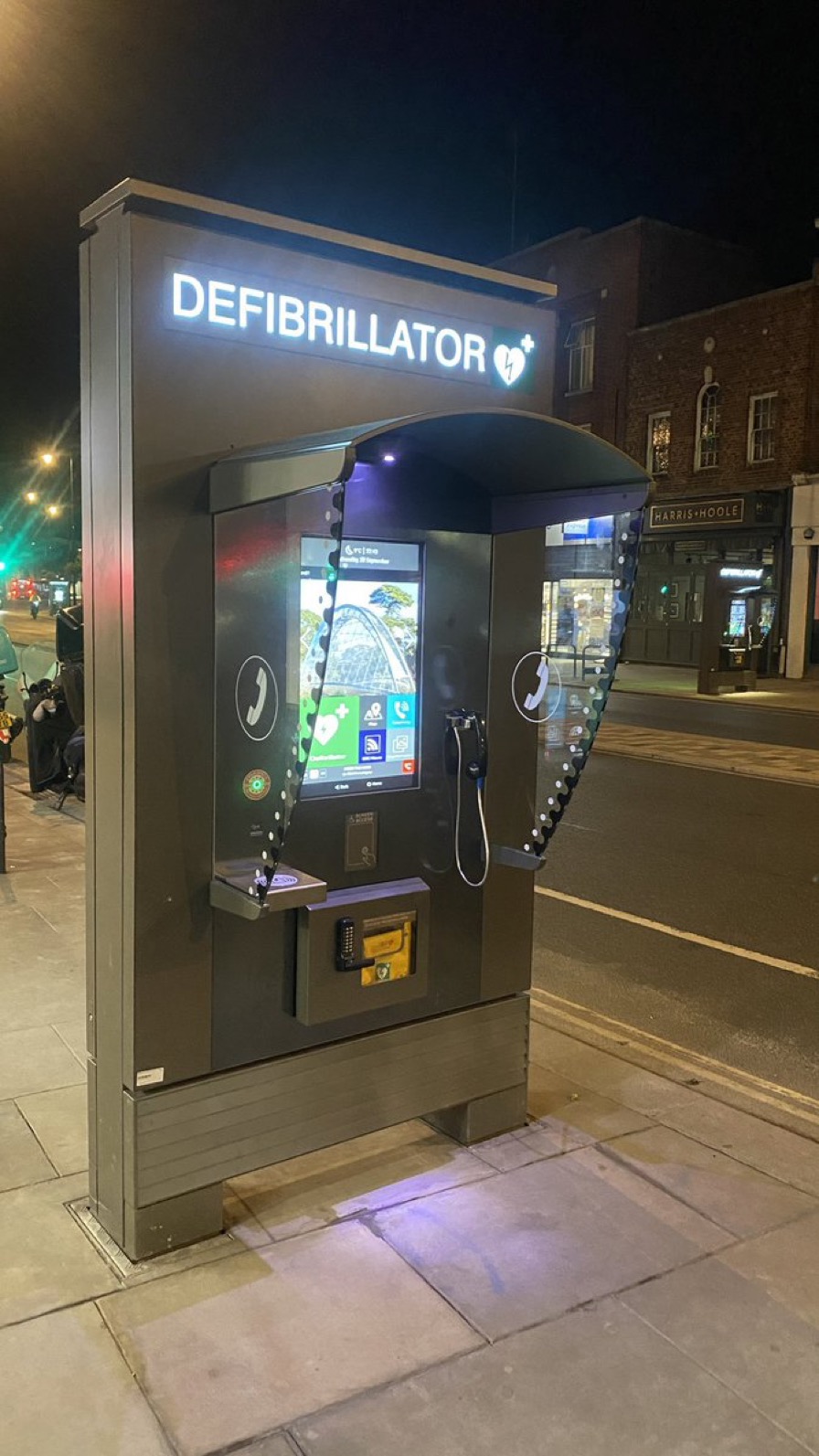Defibrillator Disinformation: Lifesaving Medical Devices are Not Woke

Laurence Fox recently shared a video of a defibrillator station on Twitter with the caption ‘Move along. Nothing to see here’, sparking a social media backlash. In response to this, Dr Becky Alexis-Martin, a Senior Research Fellow at the University of Kent, shares her own lived experience of the importance of these life-saving machines:
In 2021, I was jolted into awareness of the life-saving importance of defibrillators as a young genetic arrhythmia survivor. I am extremely lucky to be alive. You can flip a coin to understand the likelihood of my condition being discovered within my short lifetime – or post-mortem. Thankfully, I survived.
As I waited for life-saving surgery and the implantation of my own internal defibrillation device to prevent lethal arrhythmia, I felt reassured by the presence of the chunky yellow and red boxes that contained our emergency defibrillators locally. In a cardiac emergency these life-saving devices can be easily used provide an electric shock to the heart that restores a normal heartbeat.
We usually do not think about our own heartbeat during our day-to-day lives. However, if you put your hand to the left of your chest, or your fingers to your wrist, then you should be able to feel the reverberations of your own heart. However, the body and its electrical circuits are not infallible. Each week in the UK alone, twelve young adults die suddenly due to undiagnosed hereditary heart conditions.
During cardiac arrest – where the heart stops pumping blood around the body – the defibrillator can be used to restart the heart’s rhythm. During arrhythmia the defibrillator can be used to reset correct a heartbeat that is too fast, too slow, or uneven. It is an undisputable fact that defibrillators have saved millions of lives. Yet only one in ten people who have a cardiac arrest out-of-hospital will survive. So, why is this statistic so strikingly low – and does disinformation contribute to public reluctance to use defibrillators in an emergency? Lack of public understanding of heart health clearly needs to be addressed.
Academic and policy-informed research during COVID-19 has demonstrated that high quality public health messaging is vital for widespread public understanding and health message adherence. However public health communication can be disrupted in several ways. Poor-quality, inadequate, or conflicting public health messaging can produce ignorance, distrust, or misunderstanding. Trust in proven and peer-reviewed medicine can also be corroded by prominent figures who are respected for achievements outside of health. This includes Laurence Fox and his recent tweet about defibrillators. It is thought that conflation between knowledges can create public confusion.
In the context of defibrillators and their operation there is an enormous gap between public understanding and action. It is no coincidence that just 15% of people feel “very confident” about operating a public defibrillator in an emergency. Most people do not realise that the defibrillator has a sound function to talk you through each stage of the process – and that it cannot deliver an unnecessary shock to a casualty. At worst, you will have tried to save someone’s life while waiting for an ambulance to arrive. At best you will save a life.
However, there is not enough awareness of their placement – despite a large-scale mapping National Defibrillator Network project by the British Heart Foundation.
Laurence Fox’s Tweet has been viewed more than 8.3 million times as of today, 18th January. However, his attitude is not unique but reflective of a broader cultural misunderstanding of medicine, science, and technology.
Despite this and recent disinformation there can be no doubt – defibrillators are there to save lives.
Dr Becky Alexis-Martin is a Senior Research Fellow at the University of Kent. Her current research explores the cultural and social parameters of cardiovascular health education. She is also interested in health geographies and medical histories. She lives with an internal cardiac defibrillation device.
About defibrillators:
Defibrillators work because the rhythm of the heart is determined by a sophisticated electrical signalling system. This system provides vital cues that instruct the organ to steadily contract and relax. These signals originate from clumps of specialised tissue in the atrium, known as the sinus nodes. Within a healthy heart at rest, the sinus nodes will generate a signal approximately 60-100 times per minute. This signal travels at speed across the heart to the atrioventricular node. The next stop on our electrical impulse journey is at the bundle of His. It is here that electric pathways bisect left and right before continuing their epic journey to the left and right ventricles. The atria contract a split second before the ventricles, to ensure that blood flows evenly across the heart on its journey to and from the body. Normally, this process of electro-muscular activity will occur millions of times in your lifetime.






